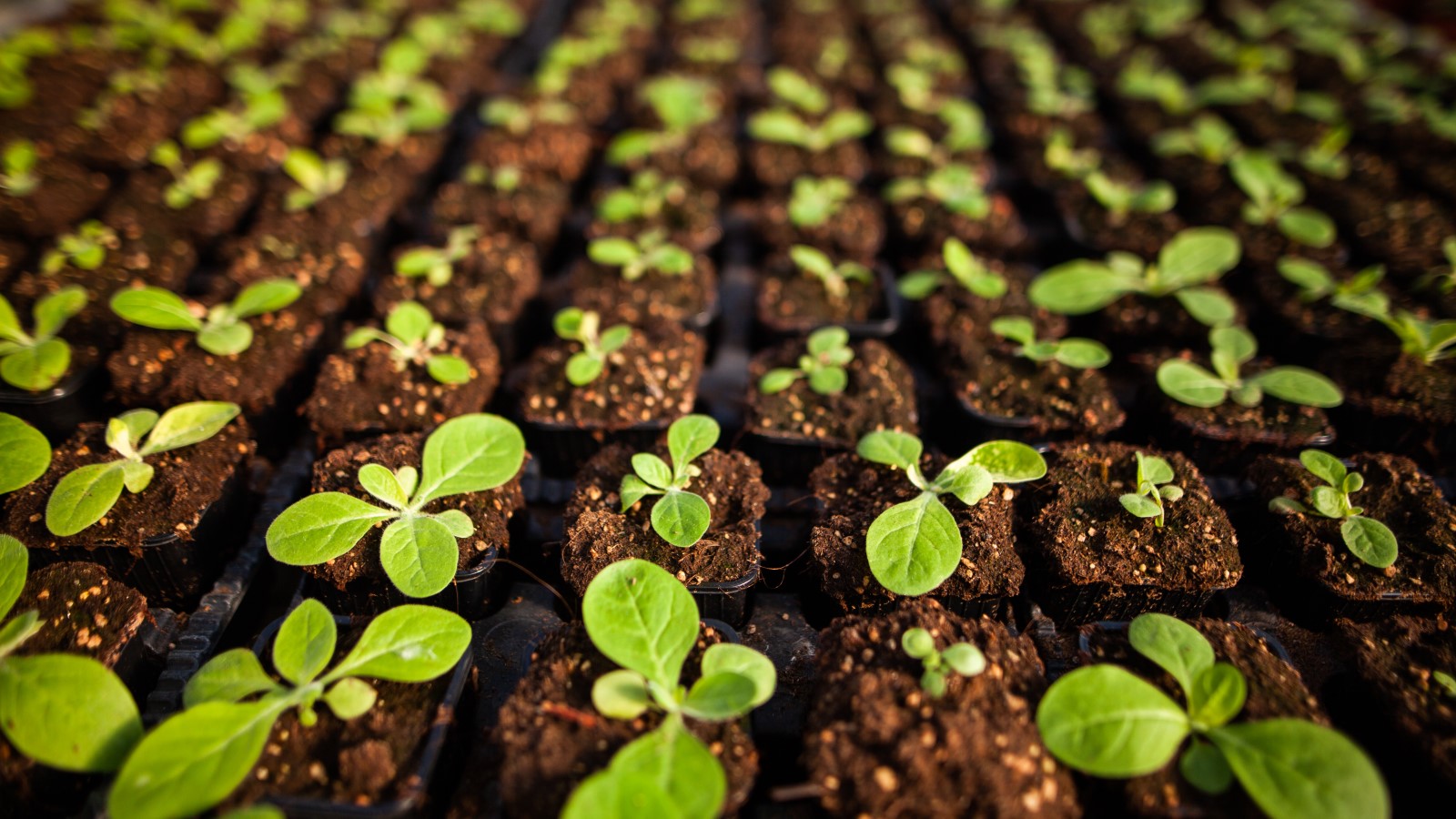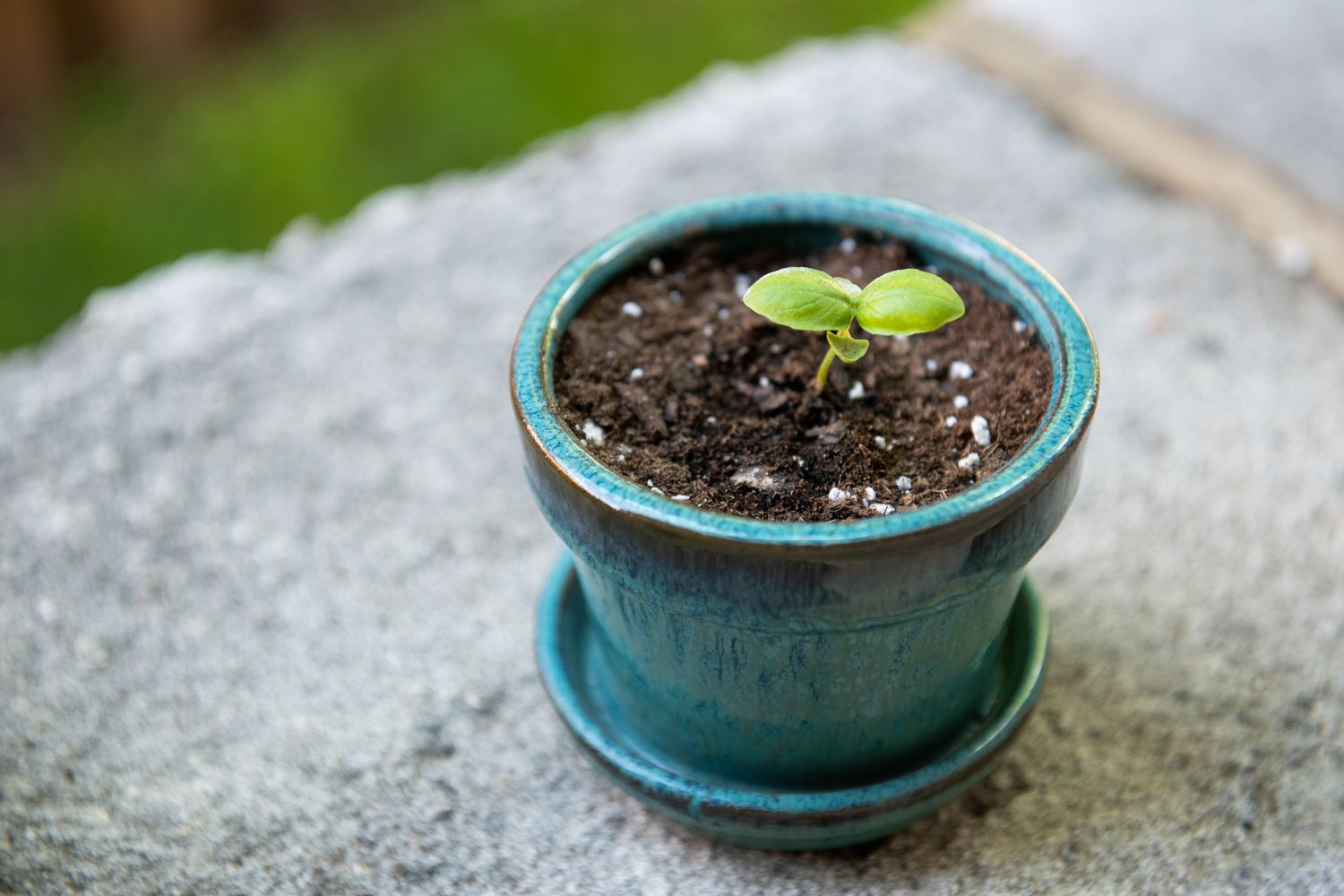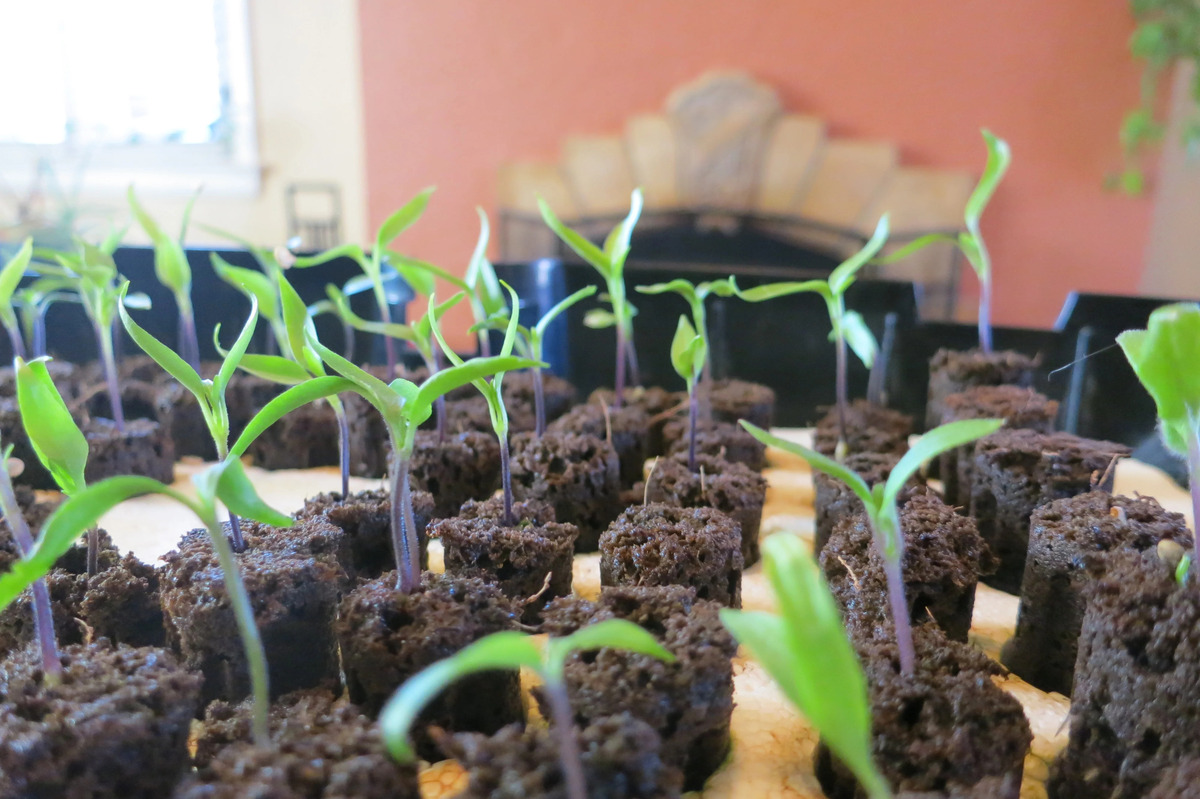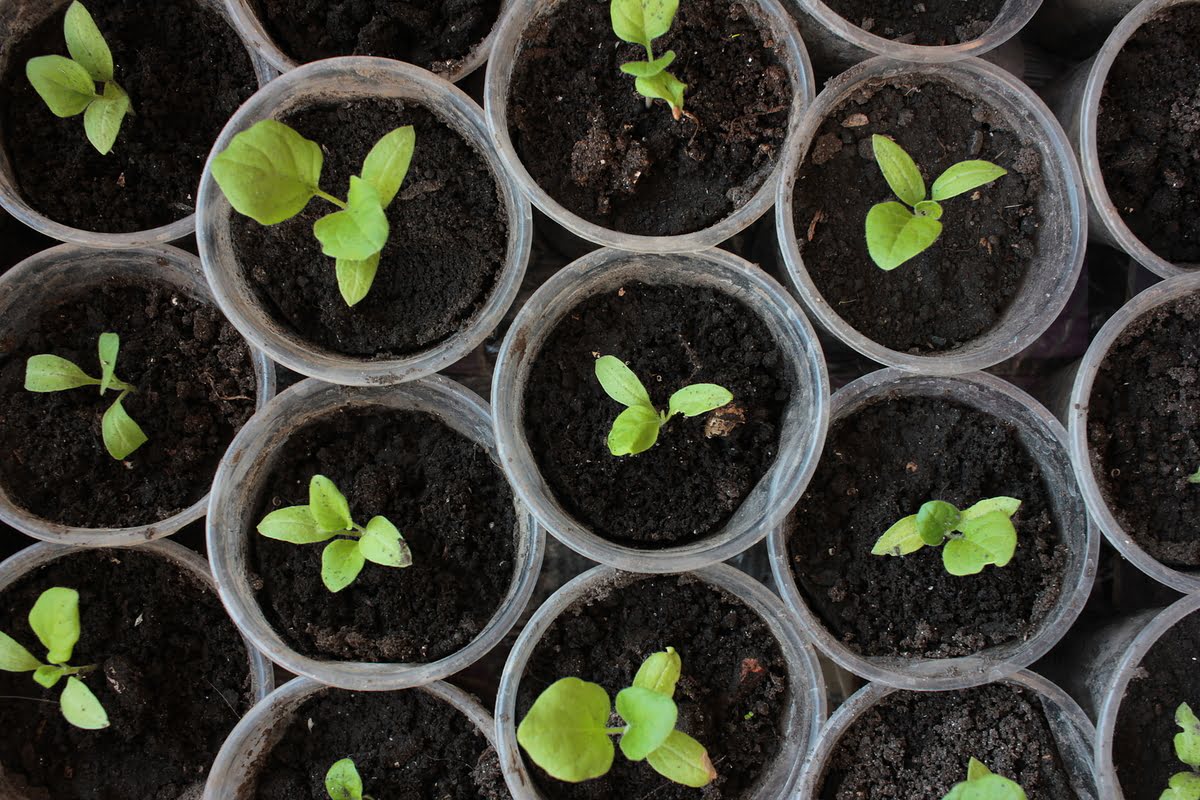Home>Gardening Techniques>When To Add Fertilizer To Seedlings


Gardening Techniques
When To Add Fertilizer To Seedlings
Modified: January 22, 2024
Learn when to add fertilizer to seedlings and ensure proper plant care with expert tips and guidelines.
(Many of the links in this article redirect to a specific reviewed product. Your purchase of these products through affiliate links helps to generate commission for Chicagolandgardening.com, at no extra cost. Learn more)
Table of Contents
Introduction
Seedlings are delicate young plants that require proper care and nutrition to thrive. As a plant parent, you want to ensure that your seedlings receive all the essential nutrients they need for healthy growth. One crucial aspect of plant care is knowing when and how to add fertilizer to your seedlings. Fertilizer provides the necessary nutrients to support their development, strengthen their root system, and promote vibrant foliage.
However, it is crucial to understand that adding fertilizer to seedlings requires careful consideration. You need to assess various factors and monitor your seedlings closely to determine if and when they need an extra nutrient boost. By being attentive to these signs and following the right practices, you can provide optimal care for your seedlings and set them up for success.
In this article, we will explore the factors to consider before adding fertilizer to seedlings, signs that indicate your seedlings need fertilizer, the best time to fertilize seedlings, types of fertilizers suitable for seedlings, how to apply fertilizer, and essential precautions and tips for successful fertilization. By the end, you will have a comprehensive understanding of when and how to add fertilizer to your seedlings, ensuring their health and vitality.
Factors to Consider Before Adding Fertilizer
Before adding fertilizer to your seedlings, several important factors need to be taken into account. These factors will help you determine if your seedlings actually require additional nutrients and which type of fertilizer will be most suitable for them. Here are the key factors to consider:
- Age of Seedlings: The age of your seedlings plays a vital role in determining their fertilizer needs. Young seedlings usually do not require fertilizer until they have developed their first true leaves. Fertilizing too early can potentially harm their delicate roots.
- Soil Quality: Assess the quality of your soil before adding fertilizer. If your soil is rich in organic matter and nutrients, your seedlings may not need additional fertilization. On the other hand, if your soil is poor or lacking in nutrients, fertilization becomes more crucial.
- Plant Species: Different plant species have varying nutrient requirements. Some may need more nitrogen, while others may require higher levels of phosphorus or potassium. Understanding the specific needs of your seedlings’ plant species will guide you in choosing the right fertilizer formulation.
- Growth Stage: The growth stage of your seedlings is another essential factor to consider. Seedlings in their early growth stages require a different nutrient balance compared to older, established plants. Providing the right nutrients during each growth stage is crucial for healthy development.
- Environmental Conditions: Environmental factors such as temperature, humidity, and light can influence the nutrient requirements of your seedlings. For instance, higher temperatures may increase nutrient absorption rates, while low light conditions can slow down growth and nutrient uptake. Monitor these conditions to gauge your seedlings’ fertilizer needs.
By considering these factors, you can ensure that you make informed decisions regarding fertilizer application. Understanding your seedlings’ specific needs will help prevent over-fertilization, which can be detrimental to their growth and overall health.
Signs that Seedlings Need Fertilizer
Monitoring your seedlings closely is essential to determine if they require fertilizer. While every plant is unique, there are certain signs you can look out for that indicate your seedlings may need a nutrient boost. Here are some common signs to watch for:
- Pale or Yellowing Leaves: If you notice that the leaves of your seedlings are pale or yellow, it may be a sign of nutrient deficiency. This is especially true for nitrogen deficiency, which can cause the leaves to lose their vibrant green color.
- Stunted Growth: If your seedlings are not growing as quickly as expected or are significantly smaller than they should be, it could be a result of insufficient nutrients. Stunted growth is a clear indicator that your seedlings may benefit from additional fertilization.
- Delayed or Irregular Leaf Development: If your seedlings are experiencing delayed or irregular leaf development, it may be due to a lack of essential nutrients. Proper fertilization can provide the necessary nutrients for healthy and uniform leaf growth.
- Frequent Wilting: If your seedlings are wilting frequently, even when properly watered, it could indicate that they are not receiving enough nutrients. Inadequate nutrient intake can weaken their overall health and make them more susceptible to stress.
- Poor Root System: Inspect the roots of your seedlings. If you notice a weak or underdeveloped root system, it may be an indication of nutrient deficiency. A healthy and robust root system is vital for proper nutrient absorption and overall plant health.
Remember that while these signs may indicate nutrient deficiency, they can also be caused by other factors such as overwatering or inadequate sunlight. It’s essential to consider all aspects of your seedlings’ care and diagnose the issue accurately before deciding to add fertilizer.
By observing and recognizing these signs, you can take prompt action to address the nutrient needs of your seedlings, ensuring their healthy growth and development.
Best Time to Add Fertilizer to Seedlings
Timing is crucial when it comes to adding fertilizer to seedlings. It’s essential to provide nutrients at the right stage of growth to maximize their effectiveness. The best time to add fertilizer to seedlings depends on several factors, including their age and growth stage. Here are some guidelines to help you determine the ideal timing:
- Starting Fertilizer: When initially planting your seedlings, it’s generally recommended to start them in a nutrient-rich growing medium or potting mix. This provides a good foundation of nutrients to support their early growth stages.
- First True Leaves: Once your seedlings have developed their first true leaves (leaves that resemble the mature leaves of the plant), it’s typically safe to start adding fertilizer. At this stage, their root system is well-established enough to handle the additional nutrients.
- Early Growth Stage: During the early growth stage, where your seedlings are actively growing and establishing their root system, it’s advisable to use a balanced fertilizer with equal parts of nitrogen, phosphorus, and potassium. This balanced formulation will provide an overall nutrient boost.
- Transition to Outdoor Environment: If you’re planning to transplant your seedlings outdoors, it’s best to avoid fertilizing them immediately before the transplant. Instead, wait until the seedlings have adjusted to their new outdoor environment before adding fertilizer.
- Ongoing Nutrient Schedule: As your seedlings continue to grow, they will benefit from regular fertilization. Follow the recommended fertilization schedule based on the specific instructions provided by the fertilizer manufacturer.
Always remember to follow the specific instructions and dosage recommendations provided by the fertilizer manufacturer. Over-fertilizing can harm your seedlings, so it’s crucial to use the correct amount and frequency of application.
By timing the addition of fertilizer appropriately, you can ensure that your seedlings receive the necessary nutrients at each stage of growth, promoting healthy development and overall plant vigor.
Types of Fertilizers Suitable for Seedlings
Choosing the right fertilizer for your seedlings is important to provide them with the specific nutrients they need for healthy growth. There are various types of fertilizers available, and understanding their characteristics will help you make an informed decision. Here are some common types of fertilizers suitable for seedlings:
- Organic Fertilizers: Organic fertilizers are derived from natural sources such as compost, manure, seaweed, and bone meal. They are slow-release fertilizers, meaning they gradually release nutrients into the soil as they break down. Organic fertilizers are generally safe to use on seedlings and help improve soil structure and fertility.
- Water-Soluble Fertilizers: Water-soluble fertilizers come in a powdered or liquid form that can be dissolved in water. They provide nutrients in a readily available form and are quickly absorbed by the seedlings’ roots. These types of fertilizers are suitable for frequent or regular application, especially during the early growth stages.
- Slow-Release Fertilizers: Slow-release fertilizers are granular or pelletized fertilizers that release nutrients gradually over an extended period. They are ideal for seedlings that need consistent nourishment over time. Slow-release fertilizers are convenient for those who prefer a “set it and forget it” approach to fertilizing.
- Controlled-Release Fertilizers: Controlled-release fertilizers, also known as timed-release or coated fertilizers, release nutrients in response to temperature, moisture, or microbial activity in the soil. These fertilizers provide a controlled and consistent nutrient supply, reducing the risk of over-fertilization.
- Specialty Fertilizers: Specialty fertilizers are formulated for specific plant needs or growth stages. These may include fertilizers with higher levels of certain nutrients, such as phosphorus for root development or potassium for flower and fruit formation. Specialty fertilizers can be beneficial for seedlings with specific nutrient requirements.
When selecting a fertilizer for your seedlings, consider factors like the nutrient composition, your seedlings’ specific needs, and your preferred application method. It’s also important to follow the manufacturer’s instructions for proper dosage and application frequency.
No matter which type of fertilizer you choose, always remember to start with a lower application rate and gradually increase it if necessary. This helps prevent fertilizer burn and allows you to monitor your seedlings’ response to the nutrients.
By choosing the right type of fertilizer, you can provide your seedlings with the necessary nutrients for robust and healthy growth, setting them up for success.
How to Apply Fertilizer to Seedlings
Applying fertilizer to seedlings requires precision and care to avoid damaging the delicate plants. Here are some steps to follow when applying fertilizer to your seedlings:
- Dilute if necessary: Depending on the type of fertilizer you’re using, you may need to dilute it in water according to the package instructions. This is common for water-soluble fertilizers or concentrated liquid fertilizers.
- Use the right tools: Use a measuring spoon or cup to ensure that you apply the correct amount of fertilizer. Avoid using bare hands to prevent direct contact and potential irritation.
- Apply to the soil: When applying fertilizer, focus on the soil around the base of the seedlings. Avoid directly applying fertilizer on the leaves or stems, as this can cause burn or damage. Gently work the fertilizer into the top layer of soil using a small trowel or your fingers.
- Water immediately: After applying the fertilizer, water the seedlings thoroughly. This helps in the absorption of nutrients and prevents any potential burning or concentration of fertilizer in one spot. Ensure the soil is evenly moist without becoming waterlogged.
- Monitor and adjust: Monitor your seedlings closely after fertilization. Observe how they respond to the nutrients and make adjustments if necessary. If you notice any signs of over-fertilization or nutrient deficiency, take appropriate action to rectify the issue.
- Follow recommended frequency: Refer to the fertilizer package instructions for recommended application frequency. Over-fertilizing can be harmful, so it’s important to adhere to the recommended guidelines for your specific fertilizer.
Remember that seedlings have sensitive roots, so avoid excessive or frequent fertilization, which may lead to nutrient runoff or salt buildup in the soil.
It’s also crucial to note that different fertilizers may have specific application instructions. Always read and follow the manufacturer’s guidelines to ensure proper application and dose.
By carefully applying fertilizer to your seedlings and following these guidelines, you can provide them with the necessary nutrients while minimizing the risk of damage or stress.
Precautions and Tips for Fertilizing Seedlings
While adding fertilizer to seedlings can greatly benefit their growth, it’s important to take certain precautions and follow helpful tips to ensure their health and avoid any potential issues. Here are some precautions and tips to keep in mind when fertilizing your seedlings:
- Start with a low dose: Begin with a lower dosage of fertilizer and gradually increase it if necessary. This helps prevent over-fertilization, which can harm the seedlings. A cautious approach allows you to gauge their response to the nutrients and make adjustments as needed.
- Choose the right formulation: Select a fertilizer formulation that matches the specific nutrient needs of your seedlings. Consider their growth stage, species, and any specific requirements they may have. Properly understanding your seedlings’ needs will help you choose the most appropriate fertilizer.
- Avoid foliar application: For seedlings, it’s best to focus on applying fertilizer directly to the soil rather than spraying it on the foliage. Direct application to the soil ensures that the nutrients reach the roots, where they are most needed.
- Water properly: Adequate watering is essential after fertilizing seedlings. It helps in the proper absorption and distribution of nutrients in the soil. Avoid overwatering, as it can lead to nutrient leaching and root rot.
- Observe signs of fertilizer burn: Watch for signs of fertilizer burn, such as leaf discoloration, wilting, or stunted growth. If you spot any of these signs, immediately flush the soil with water to dilute the excess fertilizer and prevent further damage.
- Use the right timing: Apply fertilizers at the appropriate times, considering the growth stage of your seedlings. Avoid fertilizing right before transplanting or during periods of extreme heat or cold, as this can stress the seedlings.
- Store fertilizers properly: Follow the storage instructions provided by the fertilizer manufacturer. Improper storage can lead to degradation of the fertilizer’s effectiveness or even pose safety risks.
- Monitor and adjust: Regularly monitor your seedlings’ growth and health after fertilizing. If you notice any adverse effects or nutrient deficiencies, make necessary adjustments in the fertilizer type, dosage, or timing.
Lastly, always wear appropriate protective gear such as gloves and eye protection when handling fertilizers to avoid any potential skin or eye irritation.
By taking these precautions and following these tips, you can ensure that fertilizing your seedlings is done safely and effectively, providing them with the nutrients they need for healthy and vigorous growth.
Conclusion
Fertilizing seedlings is an important aspect of plant care that ensures their healthy growth and development. By considering factors such as the age of seedlings, soil quality, plant species, growth stage, and environmental conditions, you can determine if and when your seedlings need fertilizer.
Signs such as pale or yellowing leaves, stunted growth, delayed leaf development, frequent wilting, and a poor root system indicate nutrient deficiencies in seedlings. Recognizing these signs will help you provide the necessary nourishment to support their growth.
When applying fertilizer to seedlings, it’s important to use the appropriate type of fertilizer, such as organic fertilizers, water-soluble fertilizers, slow-release fertilizers, and controlled-release fertilizers. Diluting fertilizers if necessary, applying them to the soil instead of the foliage, and watering properly after application are crucial steps in the process.
Precautions such as starting with a low dose, choosing the right formulation, avoiding foliar application, proper watering, observing signs of fertilizer burn, using the right timing, and storing fertilizers correctly are essential to ensure the health of your seedlings.
By following these guidelines, you can provide your seedlings with optimal nutrition and curate the ideal conditions for their growth. Monitoring their response, making necessary adjustments, and continuing to provide care will contribute to the overall success of your seedlings.
Remember, each plant is unique, and understanding the specific needs of your seedlings will guide you in providing them with the best care possible. With proper fertilization, your seedlings will thrive and flourish, bringing beauty and joy to your indoor or outdoor garden.










